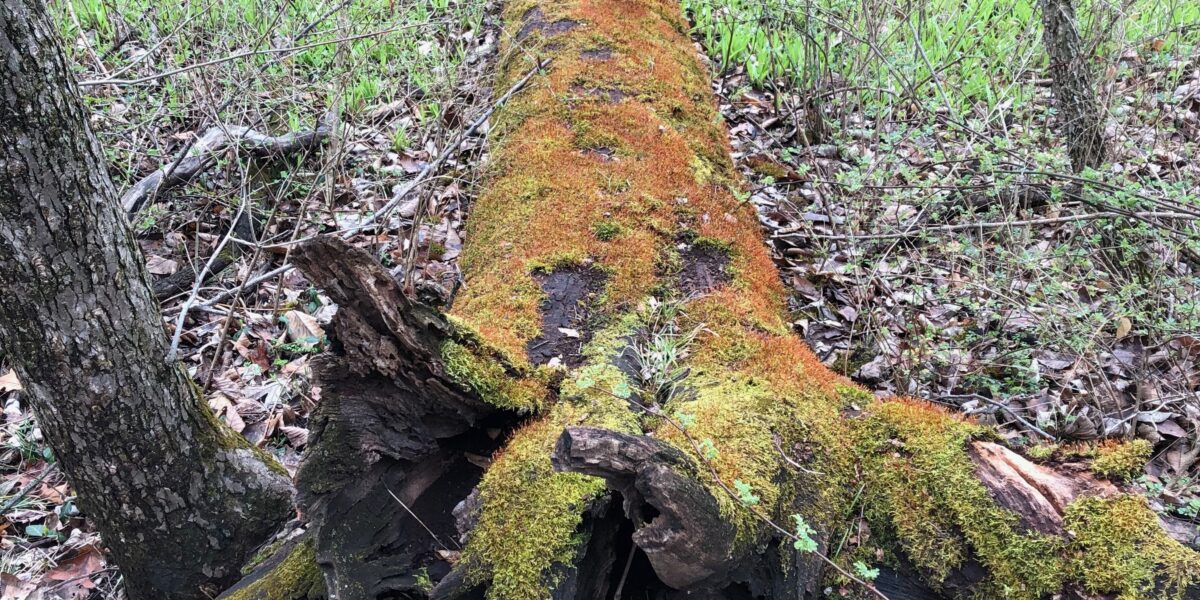An old oak log covered with Entodon with thousands of sporophytes in the early spring.
This is one of four articles on Kansas mosses that first appeared in the Kansas Native Plant Society’s Newsletter, vol. 44, Number 3.
Throughout the woodlands in the eastern half of Kansas (or further west along streams) you’ll likely find dead, fallen logs of walnut or oak that are resisting decay but have lost their bark. The term to describe these logs is decortified. And likely, along the top surface of most of these downed logs, you might observe a thick, green mat of moss. This moss mat reminds me of a shiny shag carpet. If it is winter to late spring the green of the moss will be highlighted with the brick red and orange of the sporophytes or reproductive structures growing about an inch above the mat. This moss is Entodon seductrix. While E. seductrix is certainly an attractive, large moss you’ve got to wonder what Hedwig was thinking when he first named it. While you will find other mosses in this habitat growing on logs, in my experience E. seductrix is the most common.
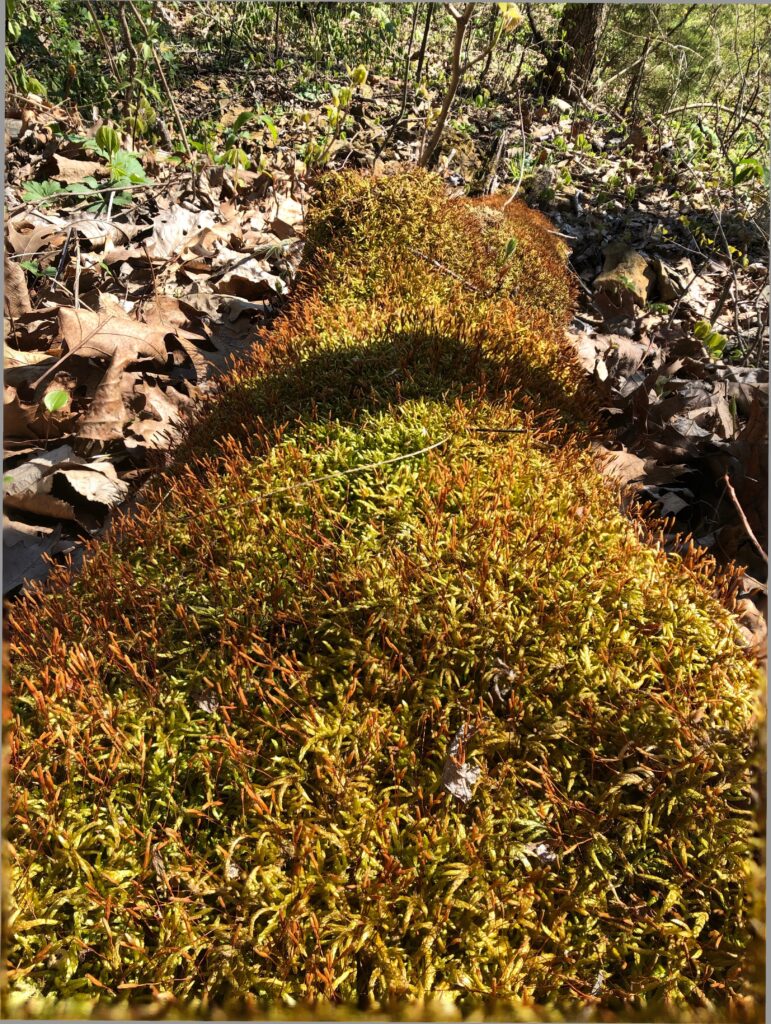
These solid, grey logs rising like elongated islands off the forest floor are the perfect habitat Entodon seductrix. This is a habitat with ample light and moisture but not likely to be covered in leaves. The E. seductrix can also be found down low on tree trunks, on rocks, and on bare soil near trails–places where leaves and litter do not accumulate. One might wonder about the moisture component of a bare log but once the moss is established it acts as a superior sponge, soaking up any moisture that lands on the log–like the snow in this image when it melts.
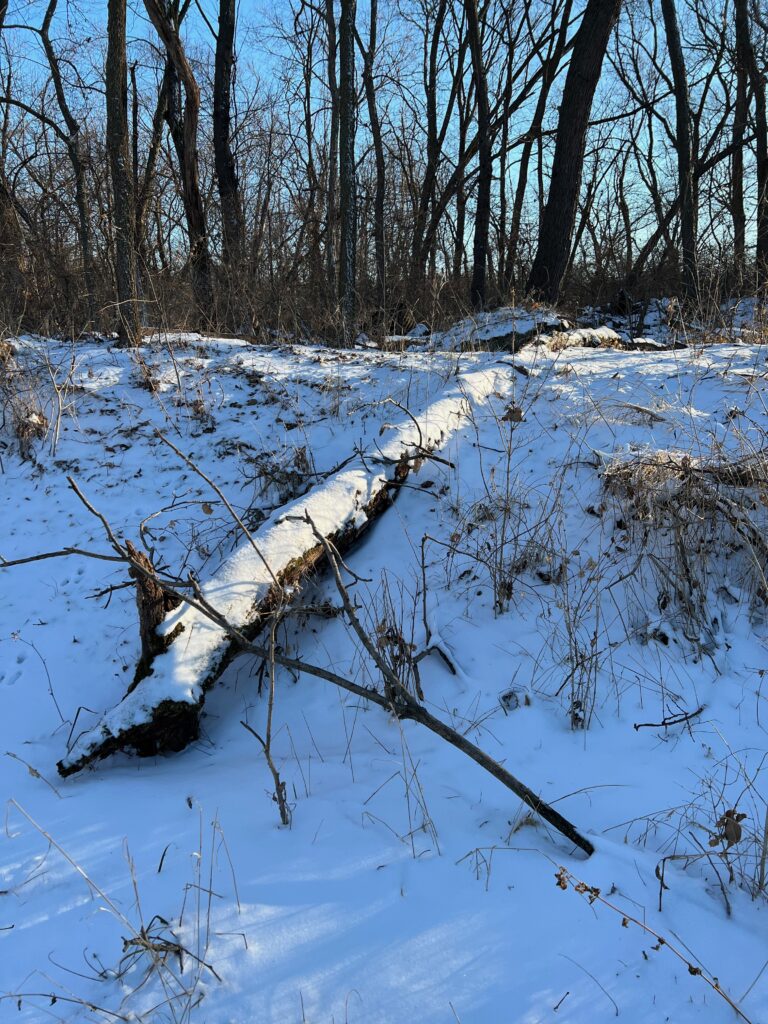
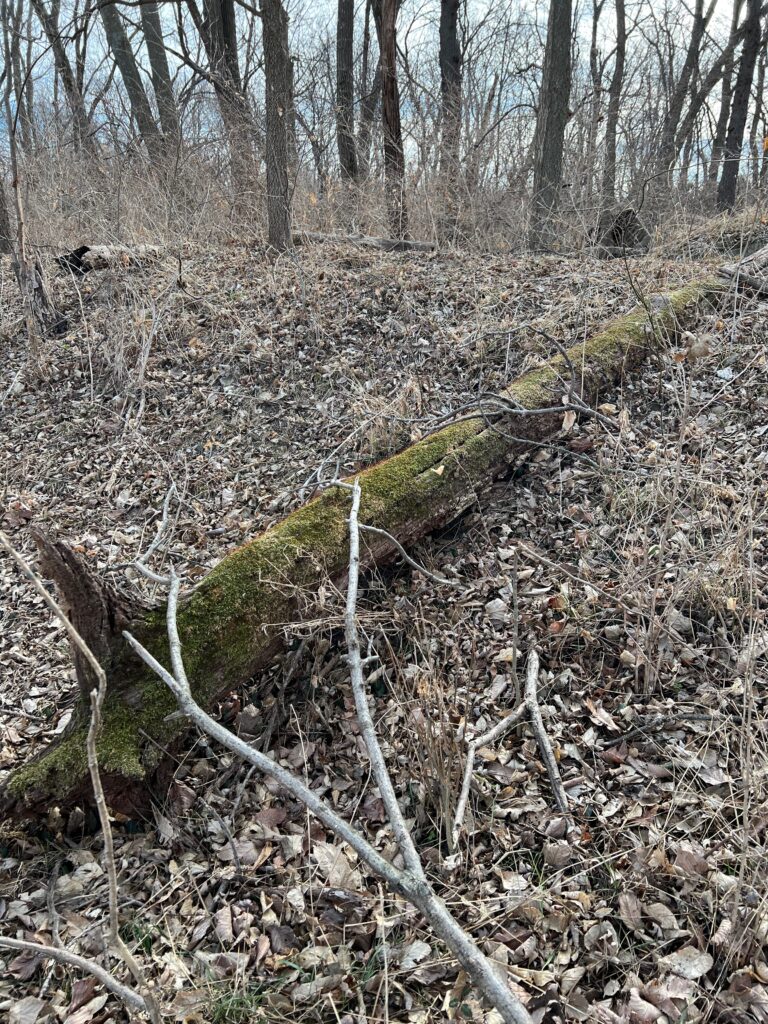
About 10 years ago, in December, I finally mustered up enough courage and gumption to collect some moss and try to identify it using the dichotomous key in Steven Churchill’s, “A Synopsis of the Kansas Mosses.” The identification keys in this science bulletin are filled with technical jargon, there are no illustrations, and for much of the process observing the characters requires a microscope along with some microscope skills so I had more than a bit of trepidation. Still, I felt that since the key was not too long I could literally just try every option/branch until I found something that fit. By the way, I don’t recommend this booklet for learning mosses but it does provide a checklist and range maps for Kansas Mosses.
I drove out to Clinton State Park and walked along the hiking trail looking for some moss to try and identify. I wasn’t very far into my walk my eye was drawn to the moss growing along the top surface of one of those fallen oaks all lit up by the low angle of the winter sun. One of the best ways to learn how to identify mosses is to start with a conspicuous moss that is not too similar to others. Entodon fits that requirement. I hustled back to the office to try and work out just what this moss was.
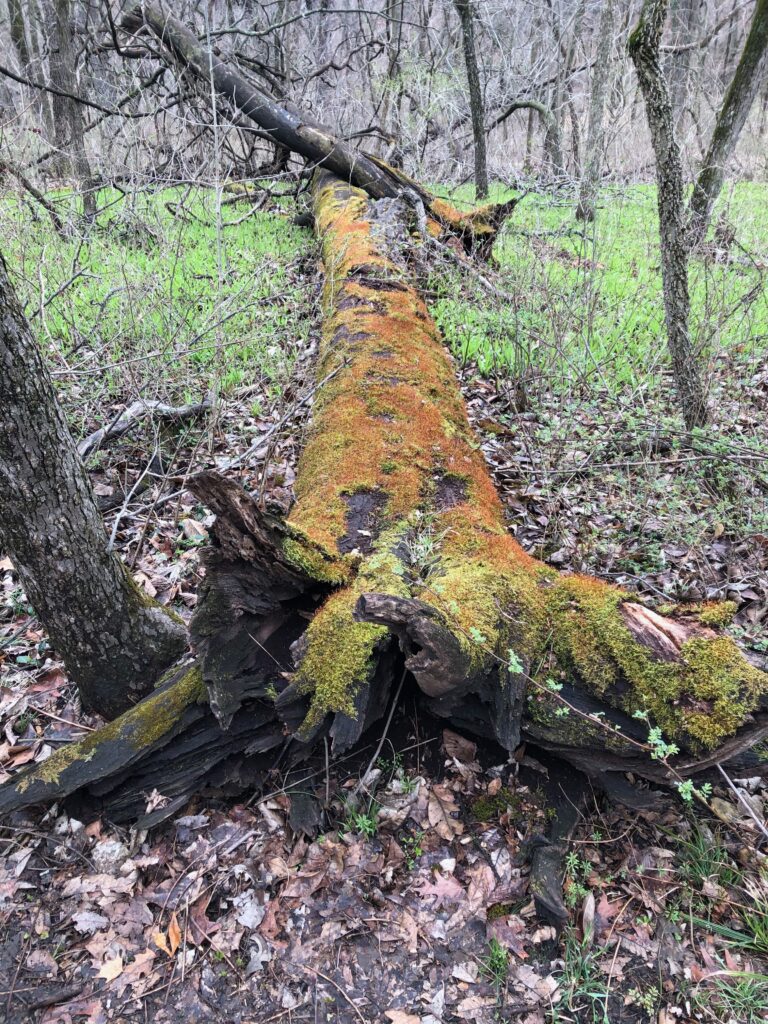
It was a tougher slog than I had anticipated. I was looking up every other word. Some I couldn’t figure out what they could possibly mean. I was using my hand lens and trying to mount these little leaves on slides to examine under the microscope. I didn’t have a lot of success but I can be a bit stubborn and persistent. Using the internet I was able to track down some possible candidates that I got from the key and actually find photos of various mosses to help me narrow down the possibilities. More importantly, I found descriptions to go along with the photos that actually made sense. Pretty sure it was blind luck but after most of a day, I eventually settled on Entodon seductrix.
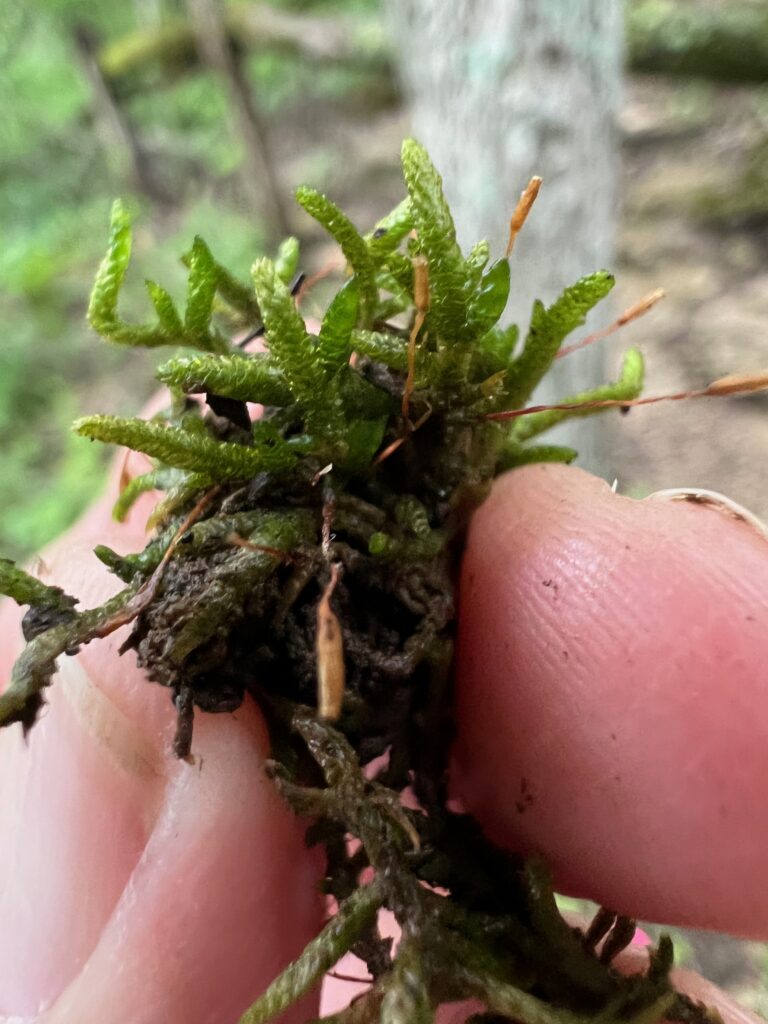
Once I had a name, I had to take the time to confirm the identification. Yes, it was found in Douglas County. Yes, it is a pleurocarp moss. Yes, the leaves don’t really have a midrib (even though the key said they do). Yes, the leaves are 1-2 mm long, oval, and smooth. Yes, the leaves are tightly placed on the stem creating a round braided yarn effect. Yes, the habitat is correct. As I used more and more resources I kind of triangulated on the identification. It was a great feeling.
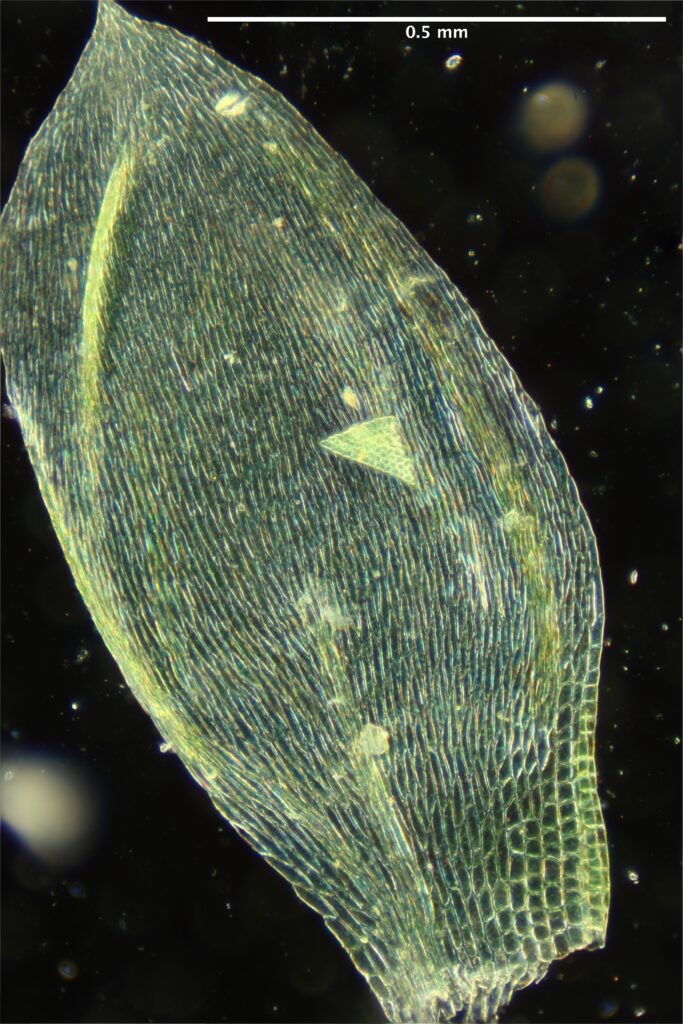
I’ve taken the time to describe this journey simply because learning mosses is a challenge but with each success, the more we learn. Recently a number of online and print resources have made the challenge more doable for the novice but it still requires some work and an understanding that mistakes are often our best teachers. Seems like being seduced by Entodon seductrix is a good way to begin. Why don’t you see if you can find some in your neck of the woods?
